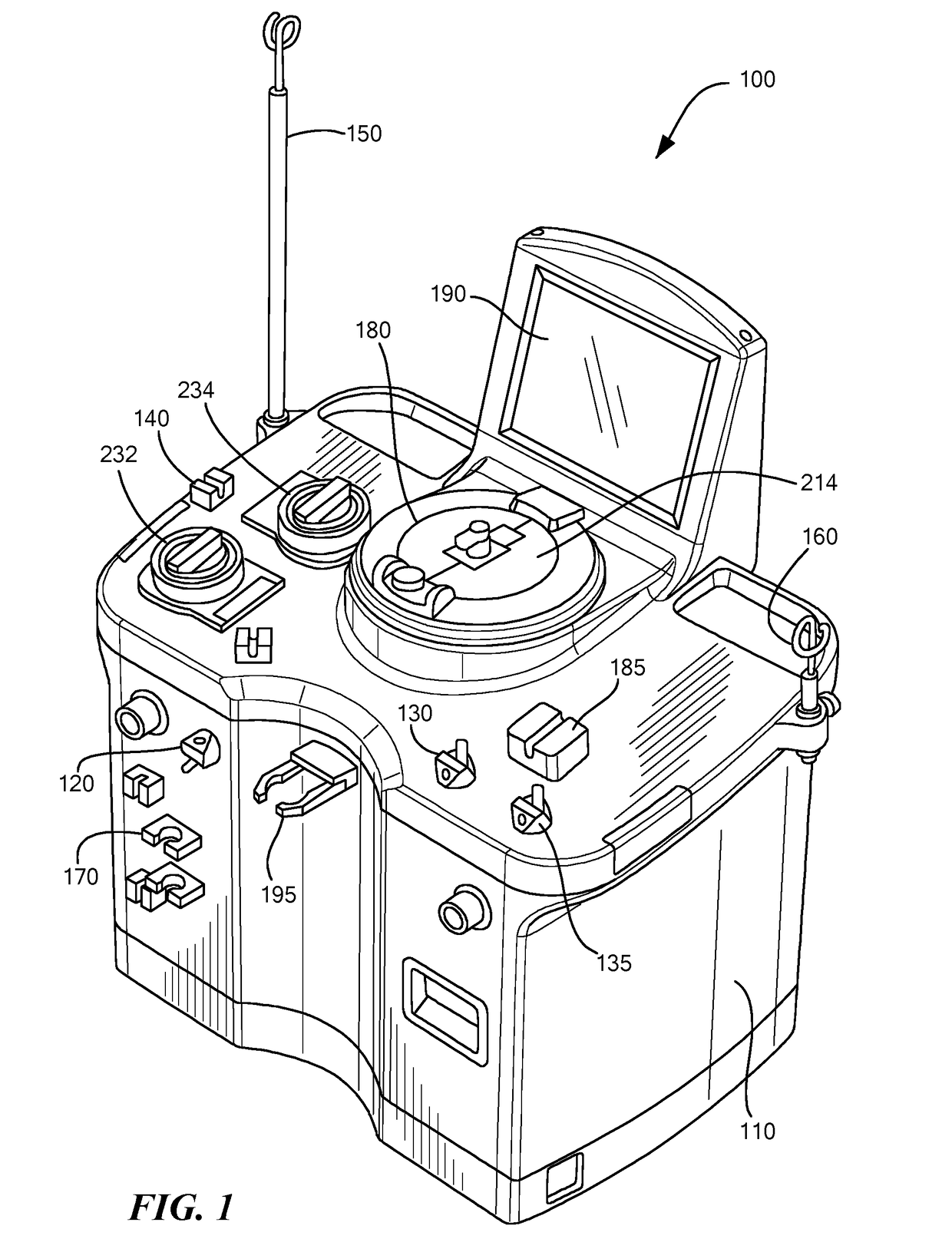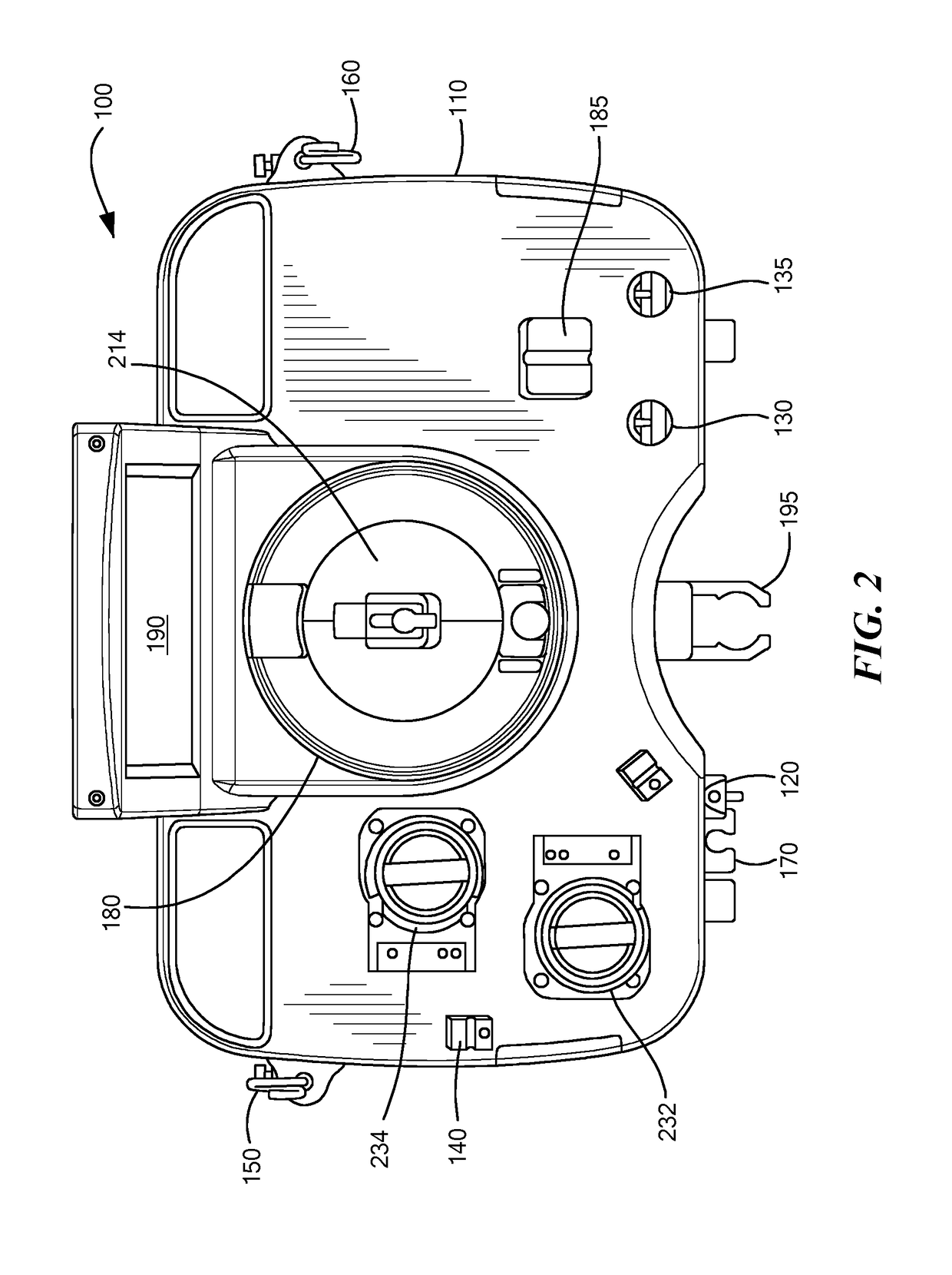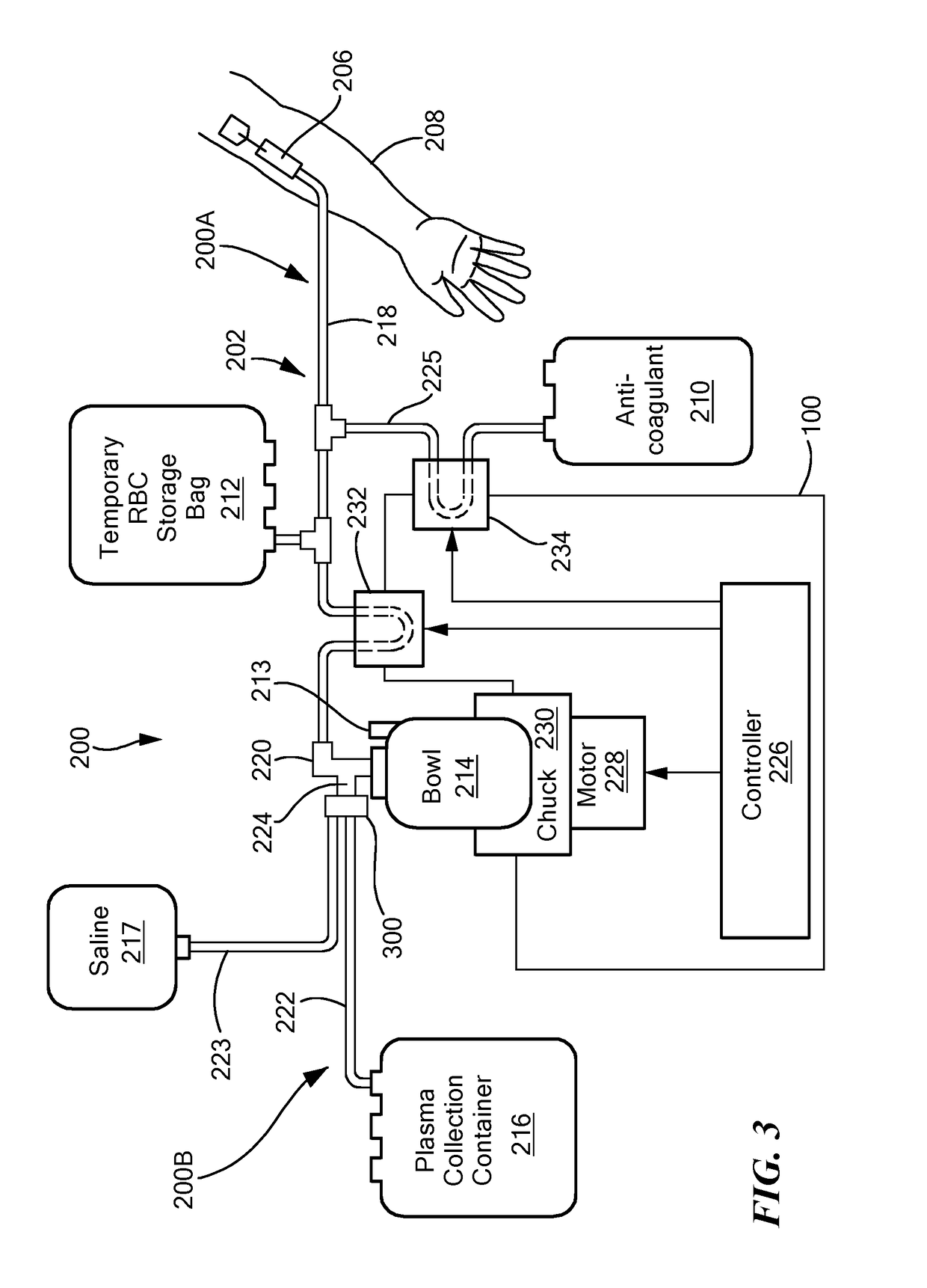System and Method for Collecting Plasma
a plasma product and plasma collection technology, applied in the field of system and method for collecting plasma products, can solve the problem that the collection system cannot determine the total amount of plasma collected
- Summary
- Abstract
- Description
- Claims
- Application Information
AI Technical Summary
Benefits of technology
Problems solved by technology
Method used
Image
Examples
Embodiment Construction
[0018]Illustrative embodiments of the present invention provide blood processing systems and methods for collecting a target volume of pure plasma. The system and method calculate a percentage of anticoagulant collected within a plasma collection container (e.g., in addition to the plasma that is collected within the container) based on the amount of anticoagulant added to the system and the hematocrit of the donor. The system / method may then calculate the volume of pure plasma (e.g., plasma without anticoagulant) that has been collected within the container. Details of the illustrative embodiments are discussed below.
[0019]As shown in FIGS. 1 and 2, the blood processing system 100 includes a cabinet 110 that houses the main components of the system 100 (e.g., the non-disposable components). Within the cabinet 110, the system 100 may include a first / blood pump 232 that draws whole blood from a subject, and a second / anticoagulant pump 234 that pumps anticoagulant through the system 1...
PUM
 Login to View More
Login to View More Abstract
Description
Claims
Application Information
 Login to View More
Login to View More - R&D
- Intellectual Property
- Life Sciences
- Materials
- Tech Scout
- Unparalleled Data Quality
- Higher Quality Content
- 60% Fewer Hallucinations
Browse by: Latest US Patents, China's latest patents, Technical Efficacy Thesaurus, Application Domain, Technology Topic, Popular Technical Reports.
© 2025 PatSnap. All rights reserved.Legal|Privacy policy|Modern Slavery Act Transparency Statement|Sitemap|About US| Contact US: help@patsnap.com



